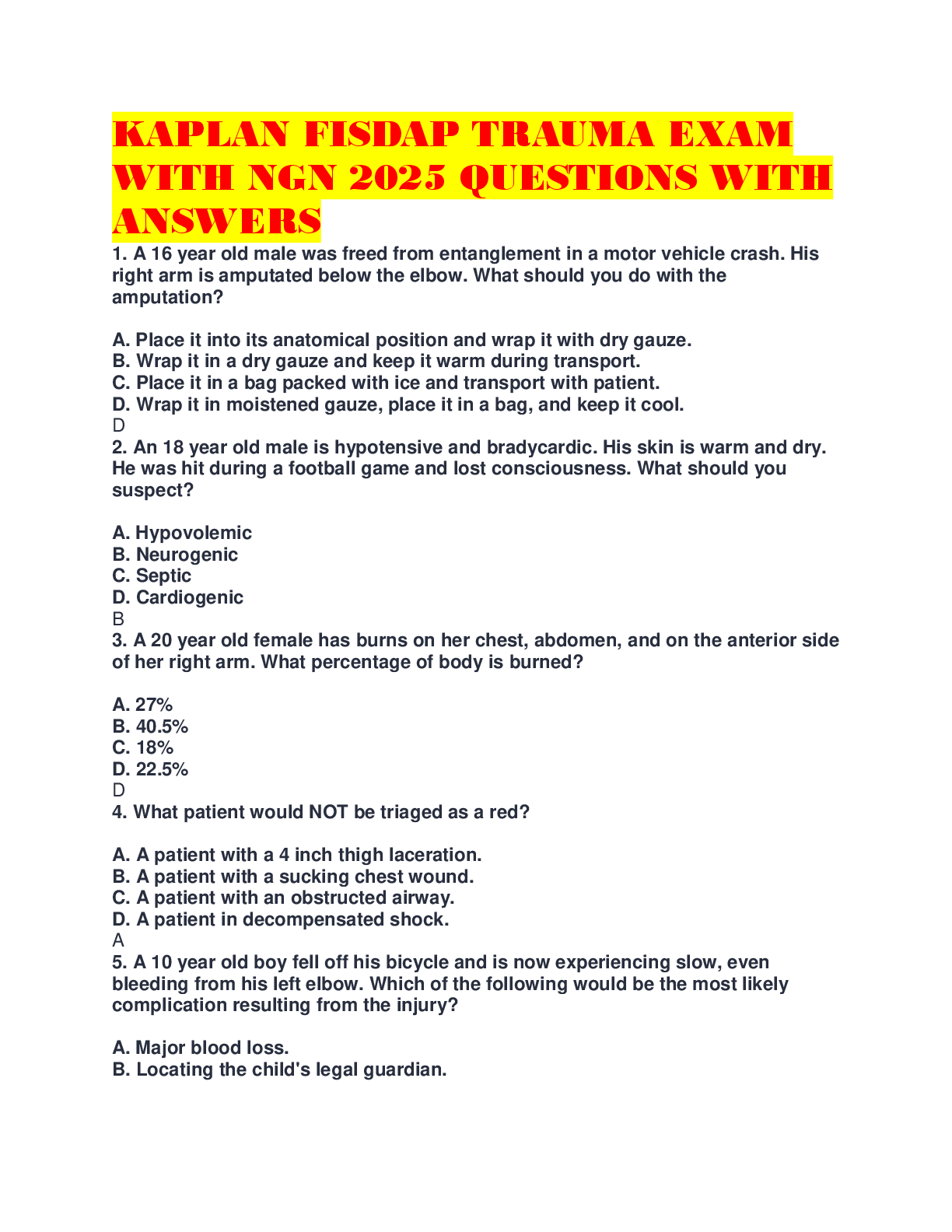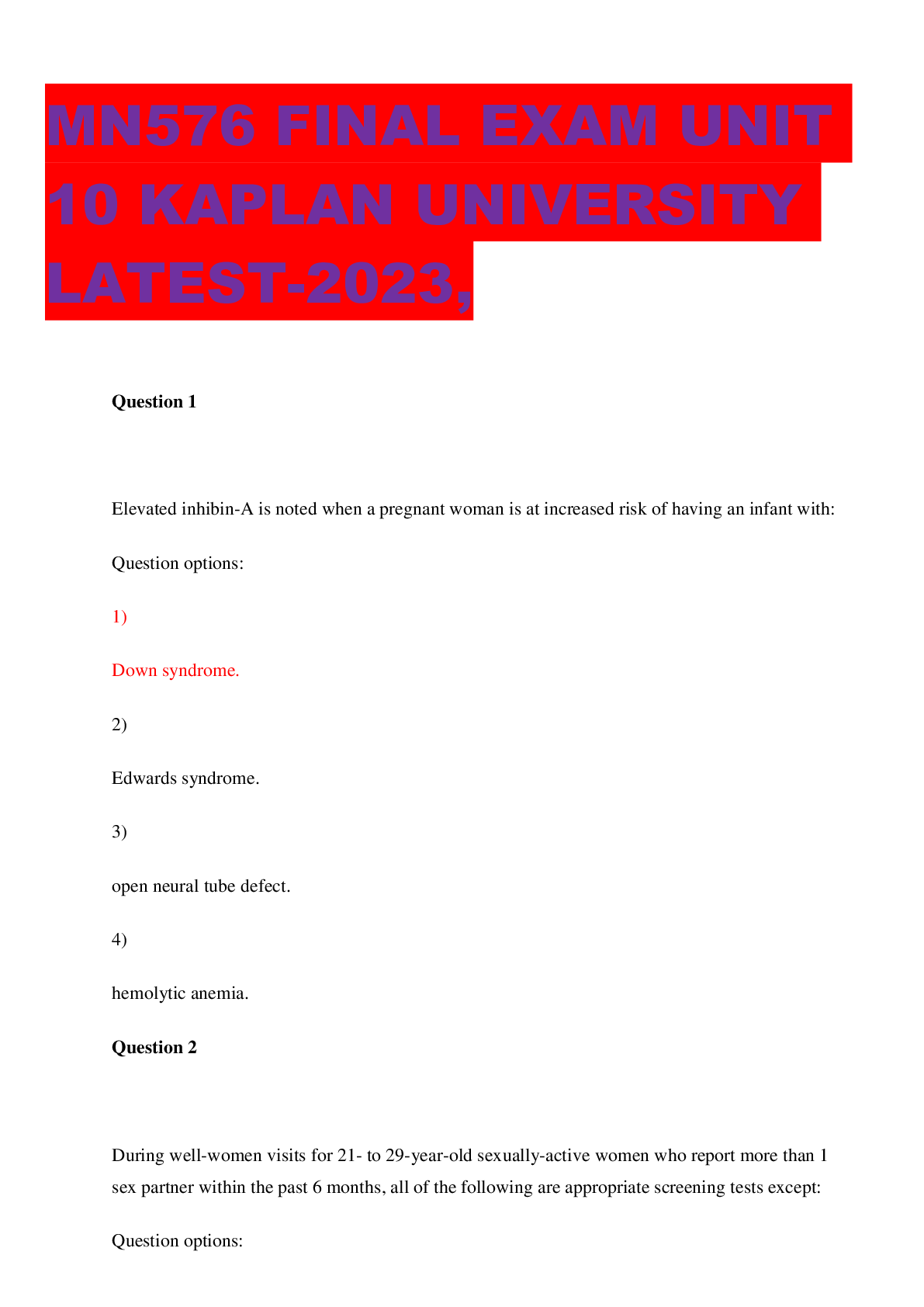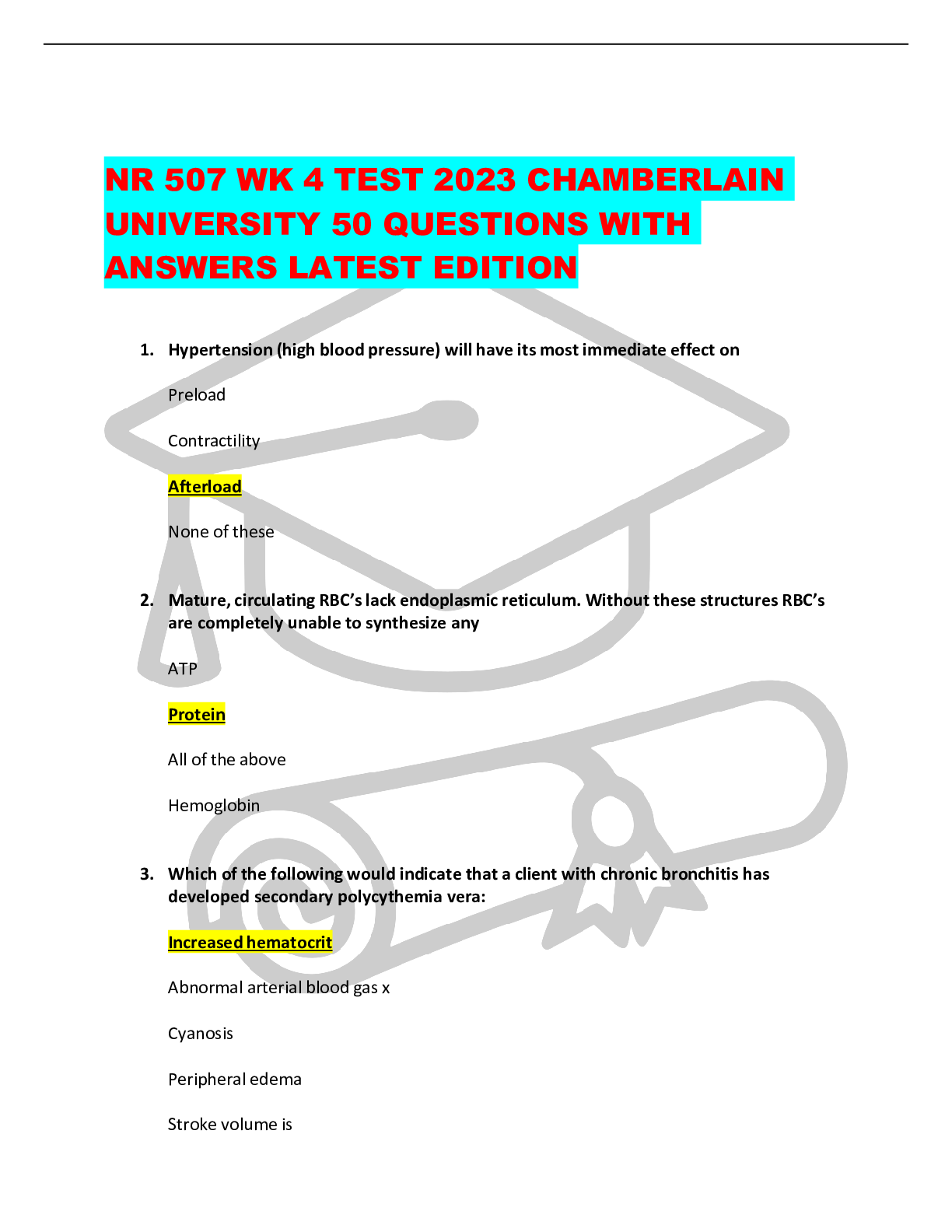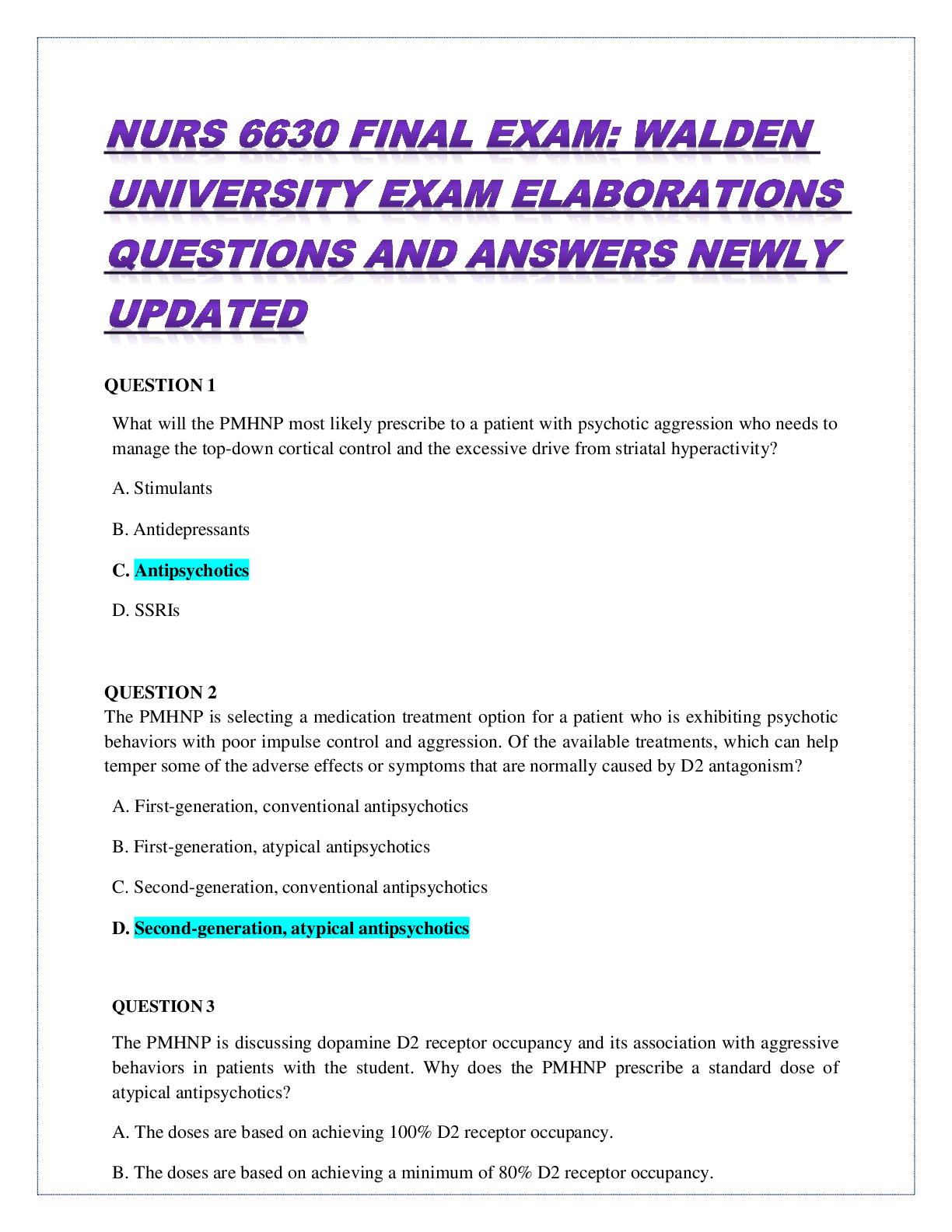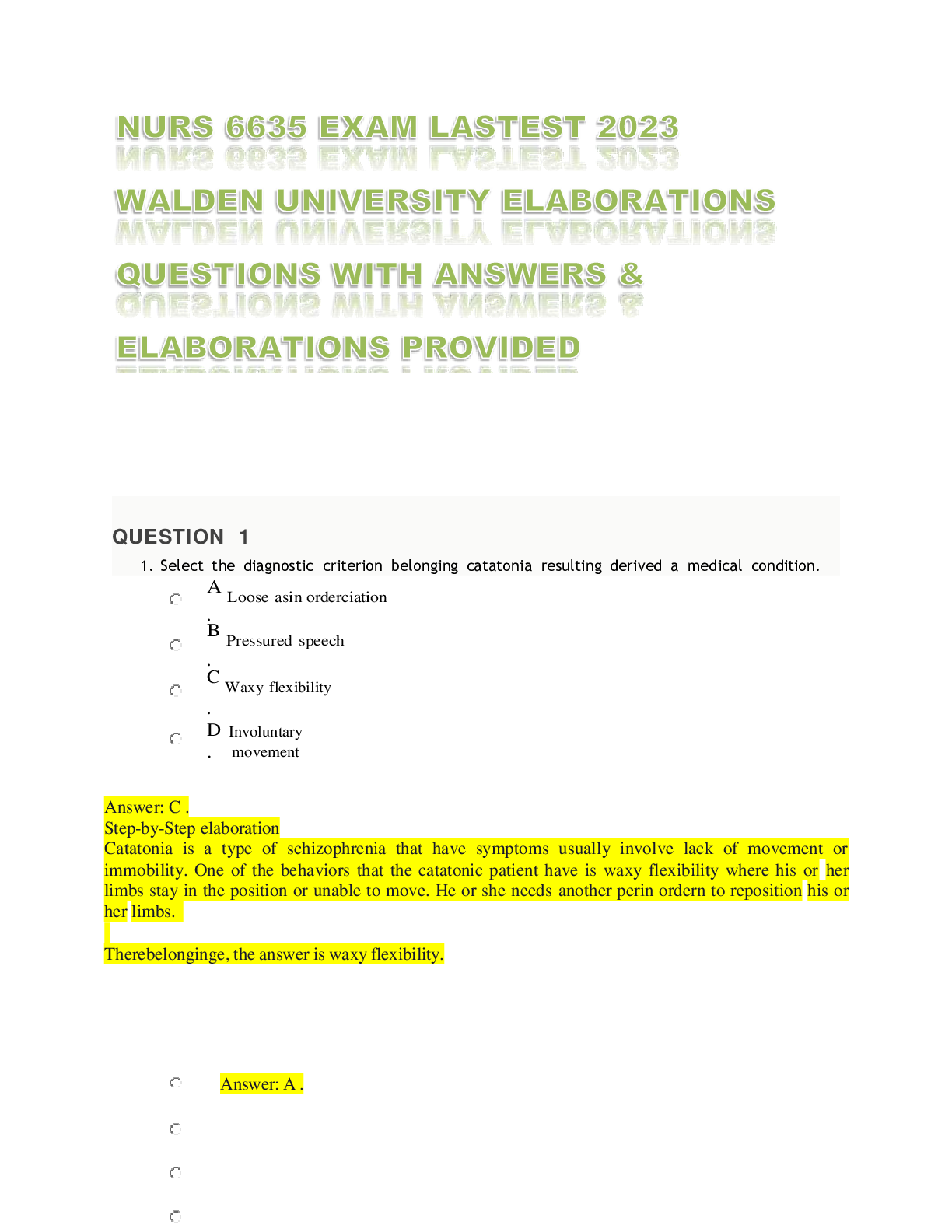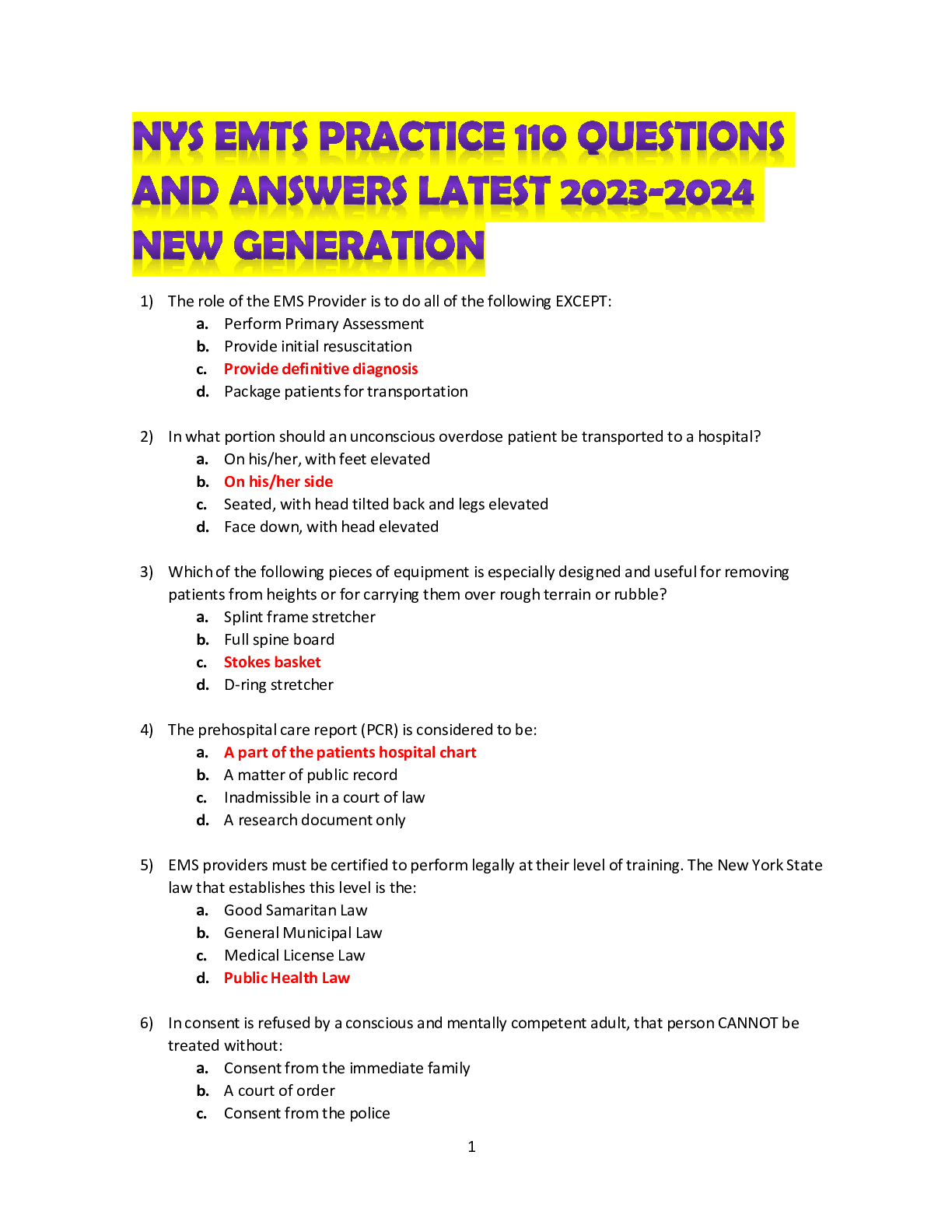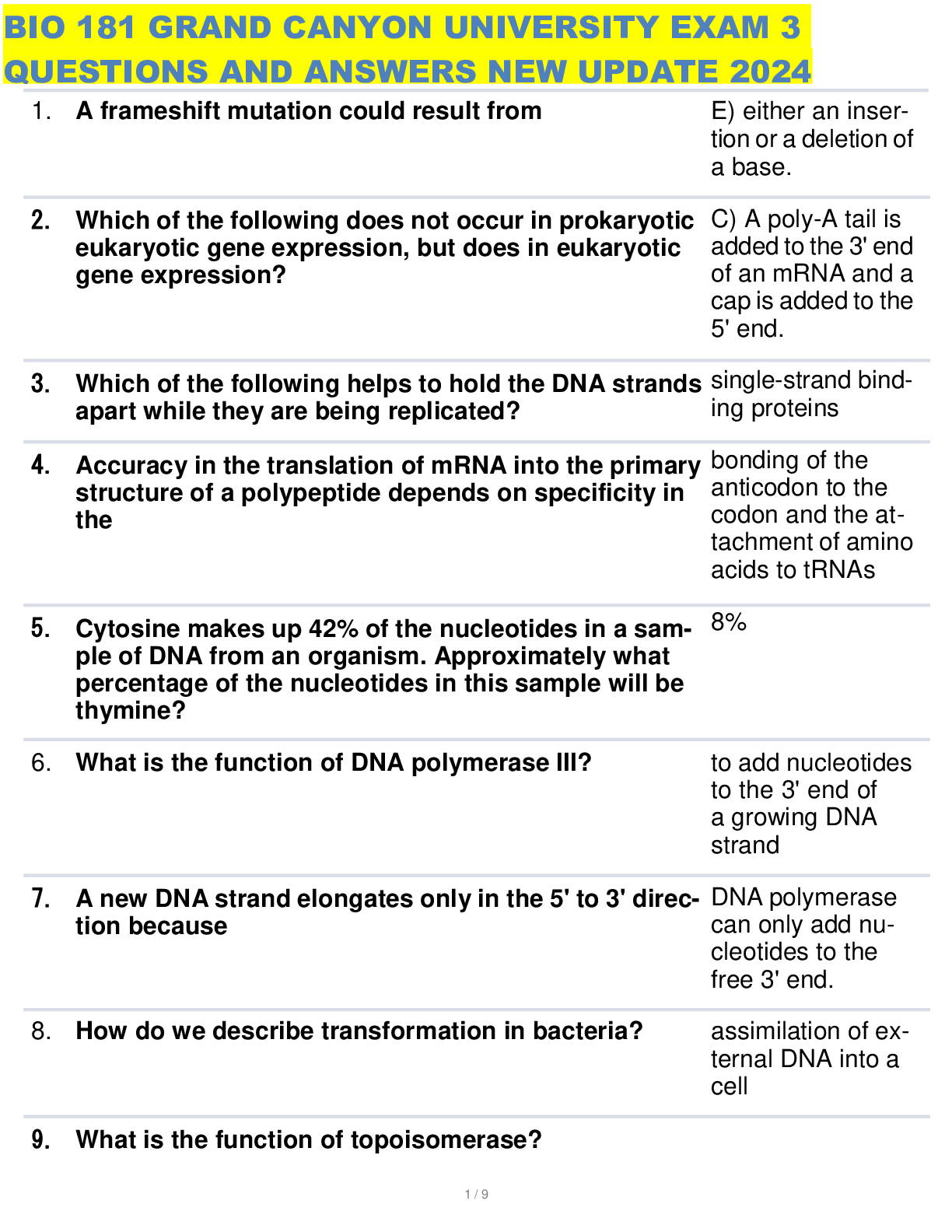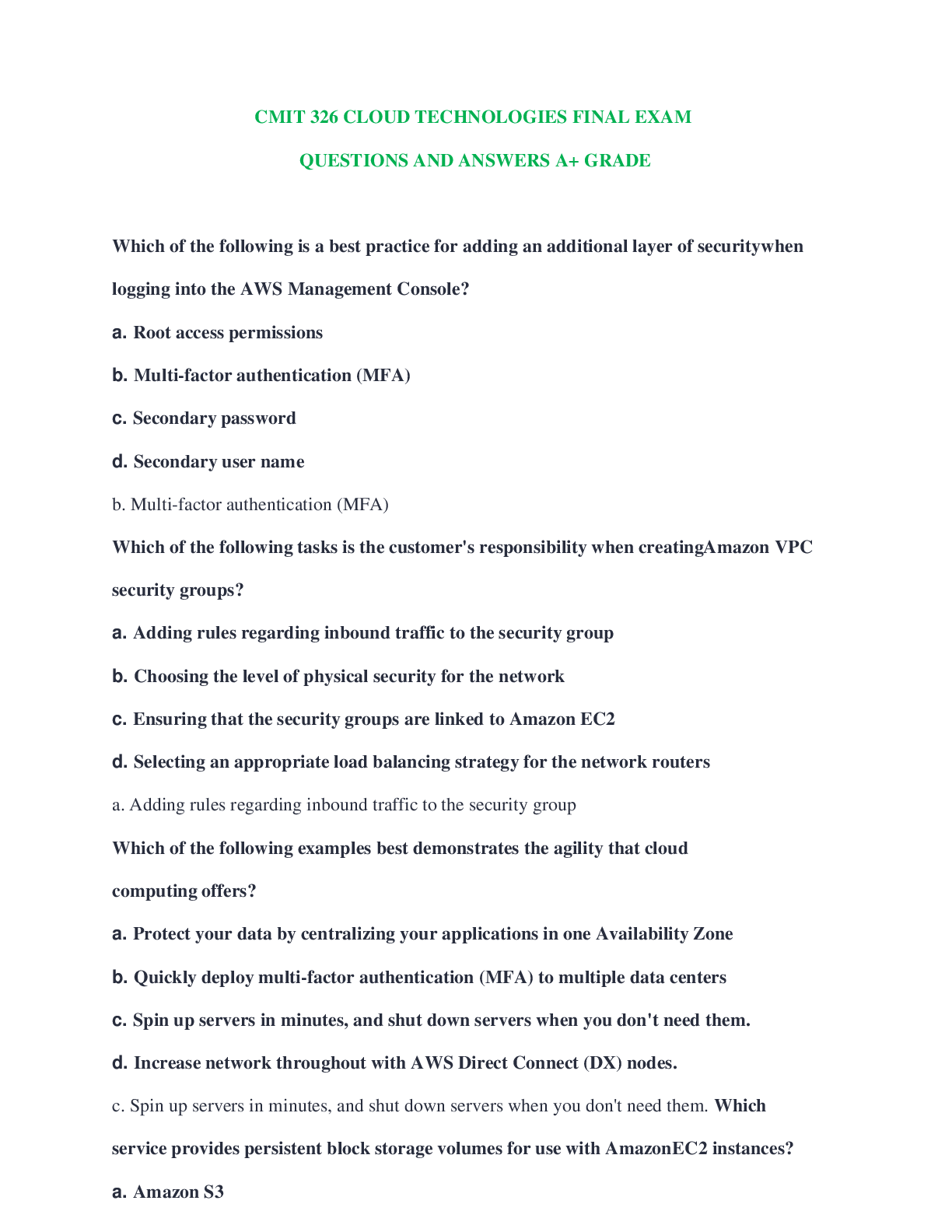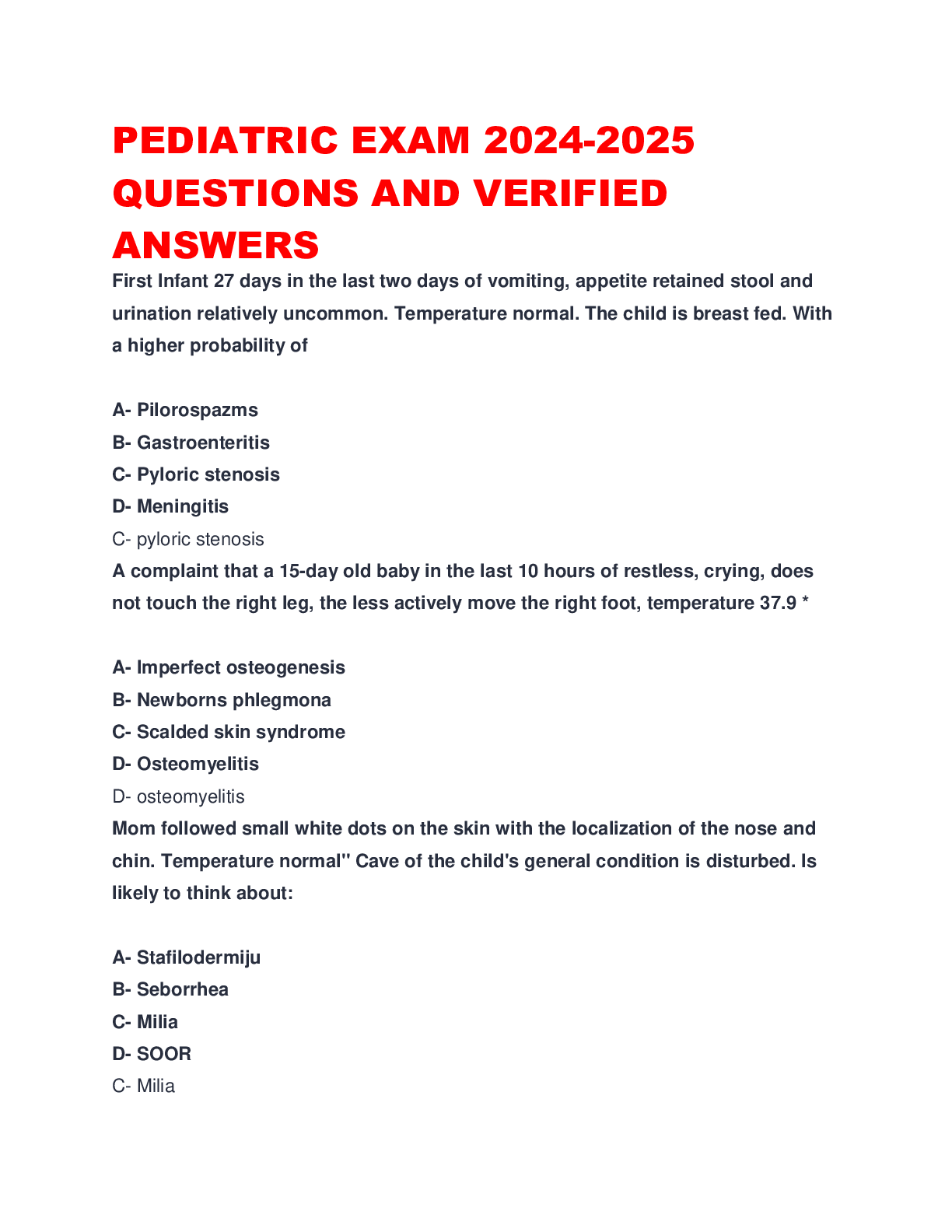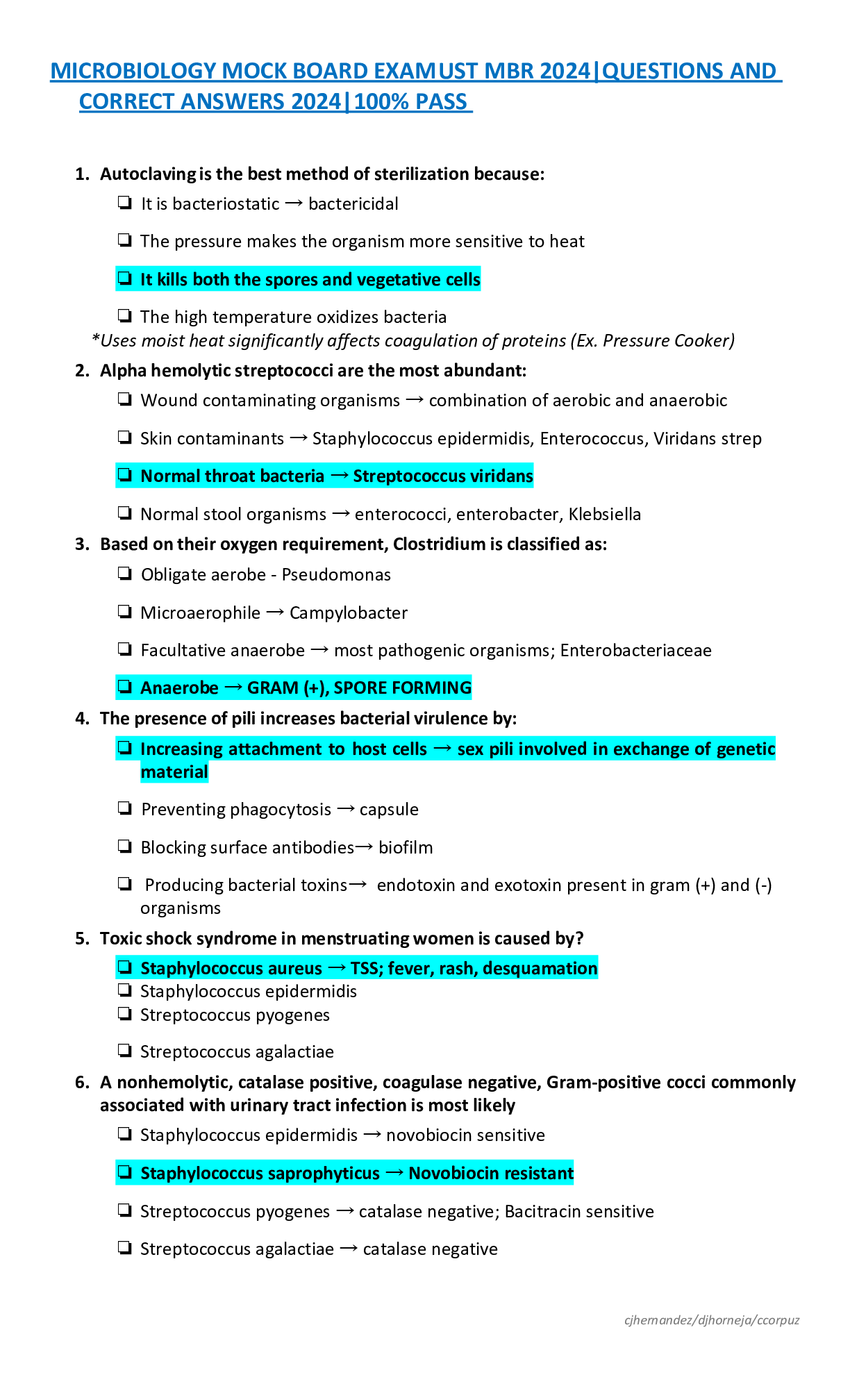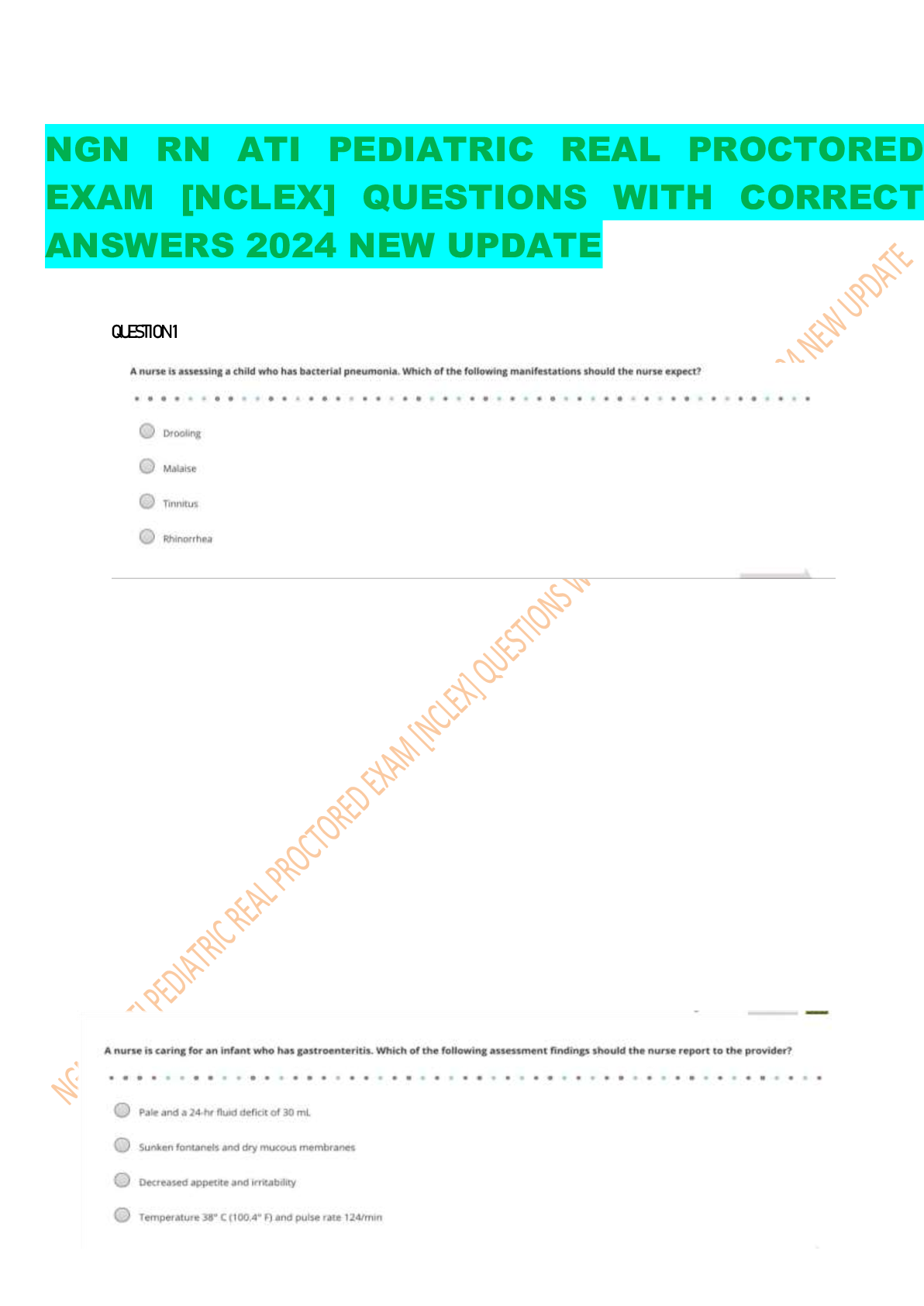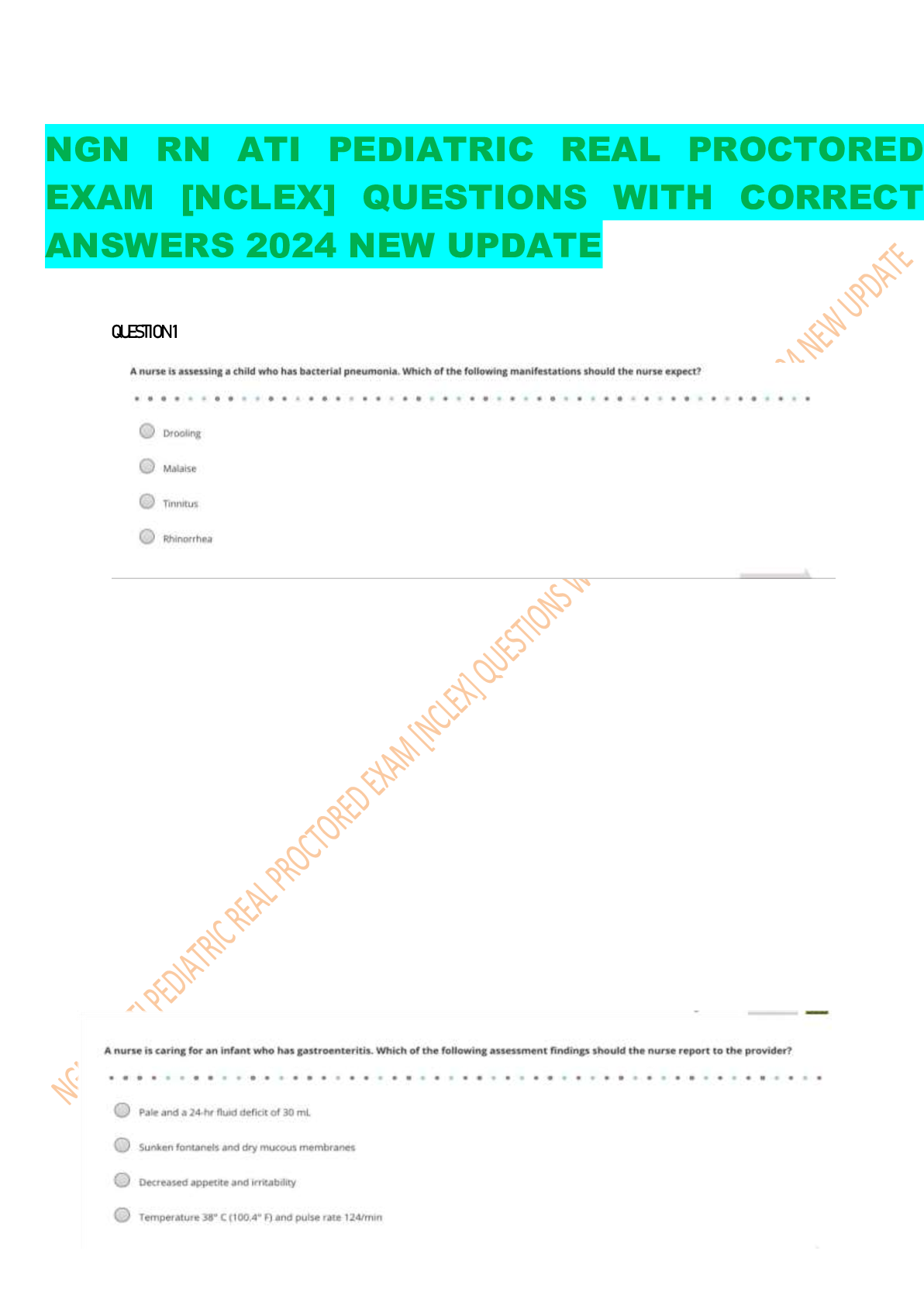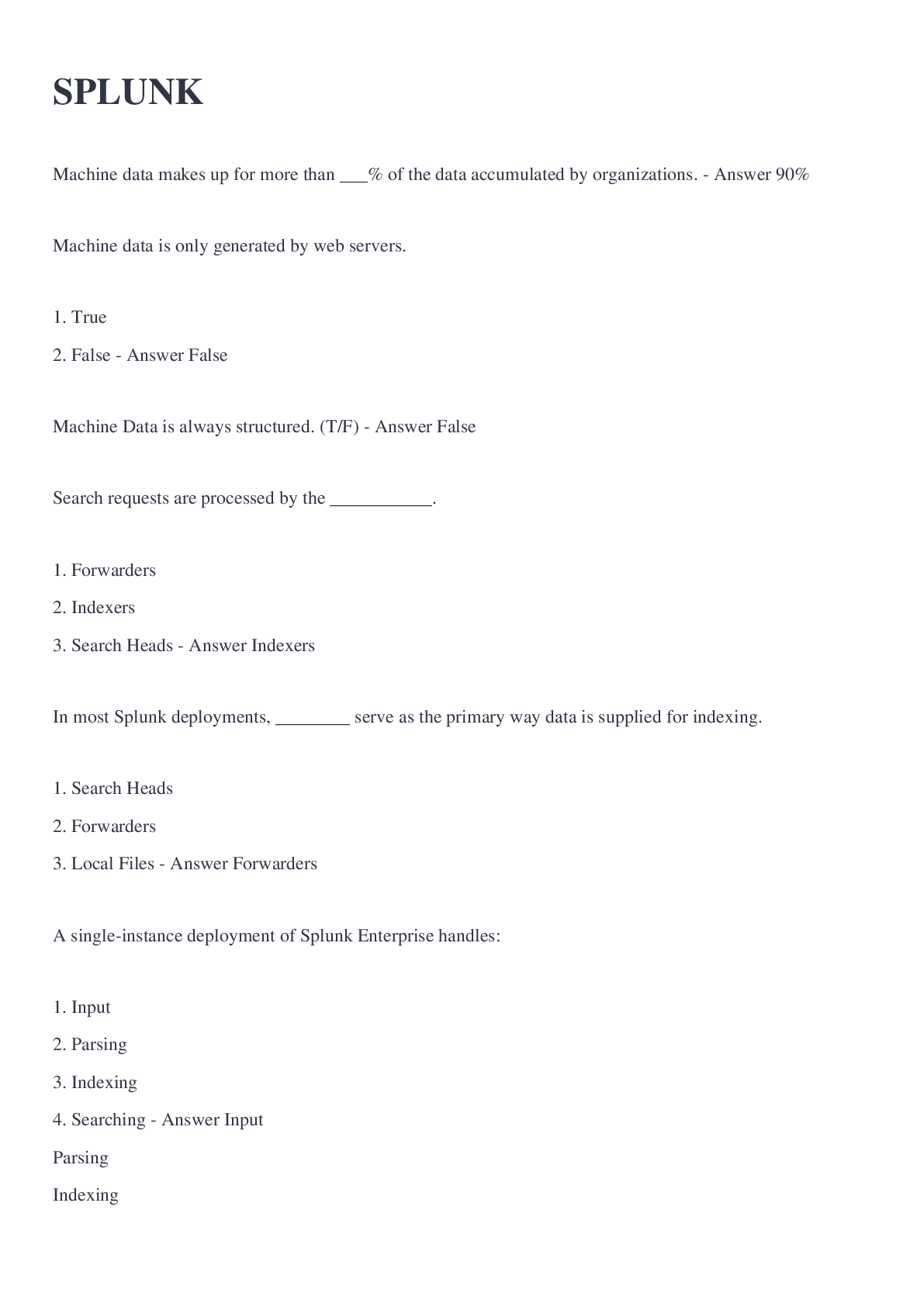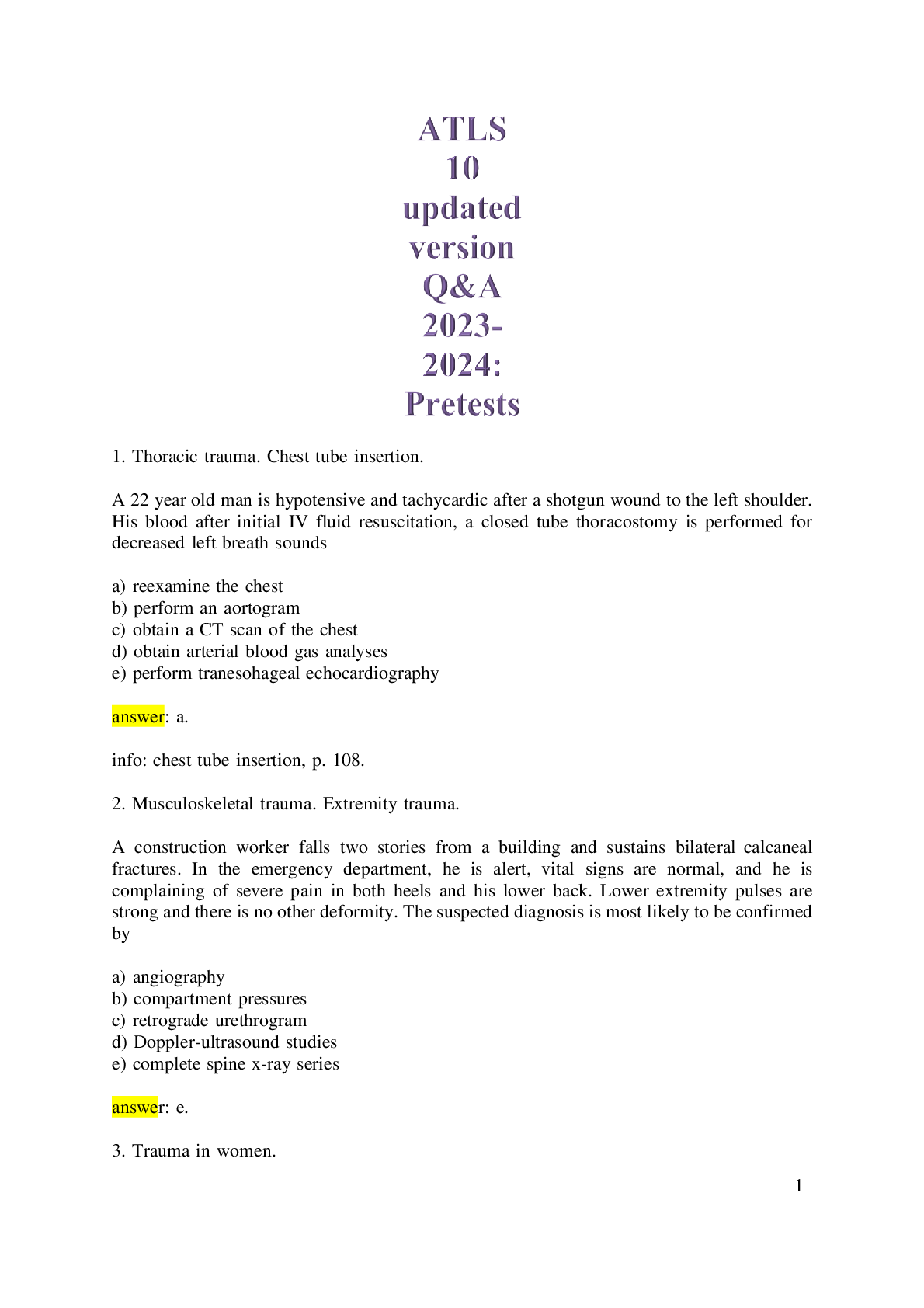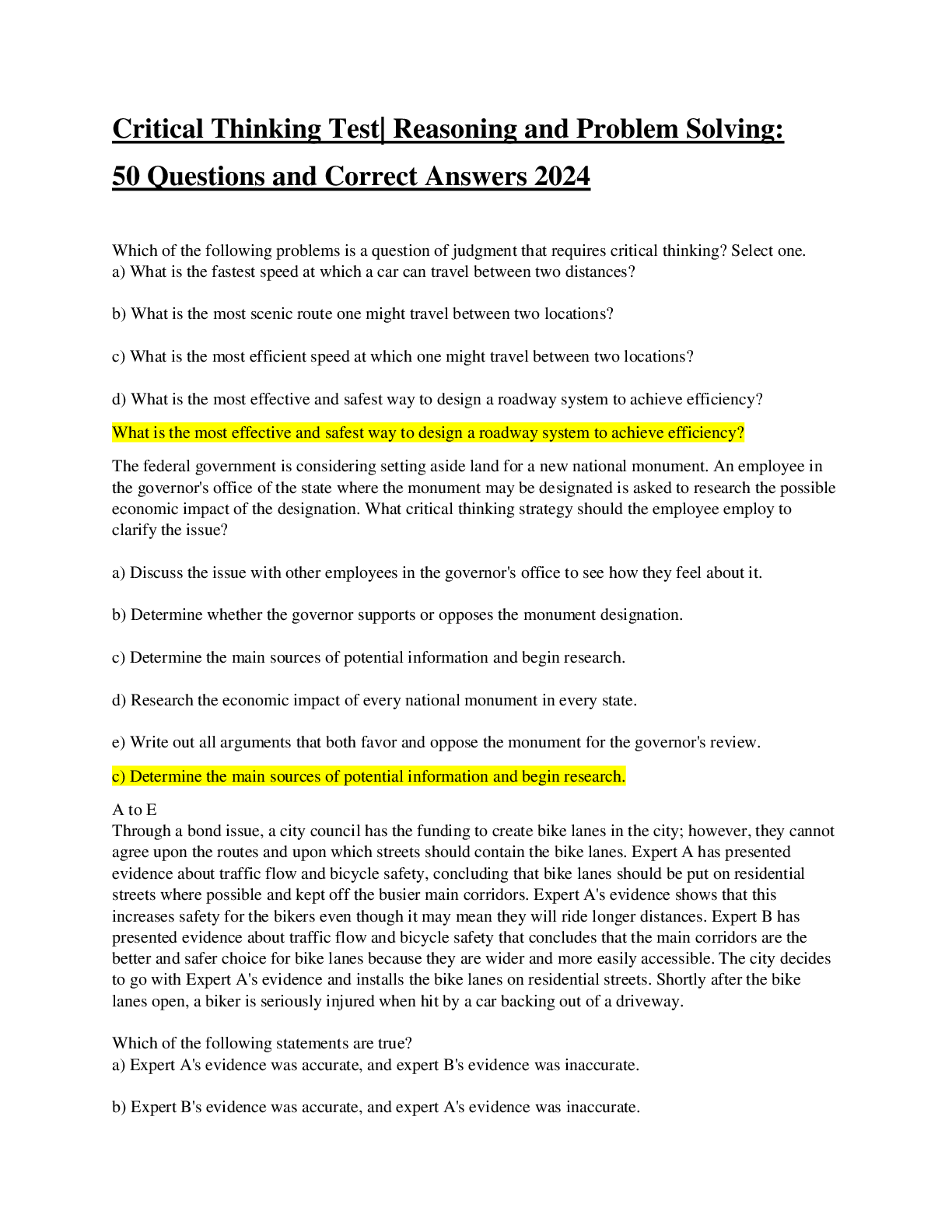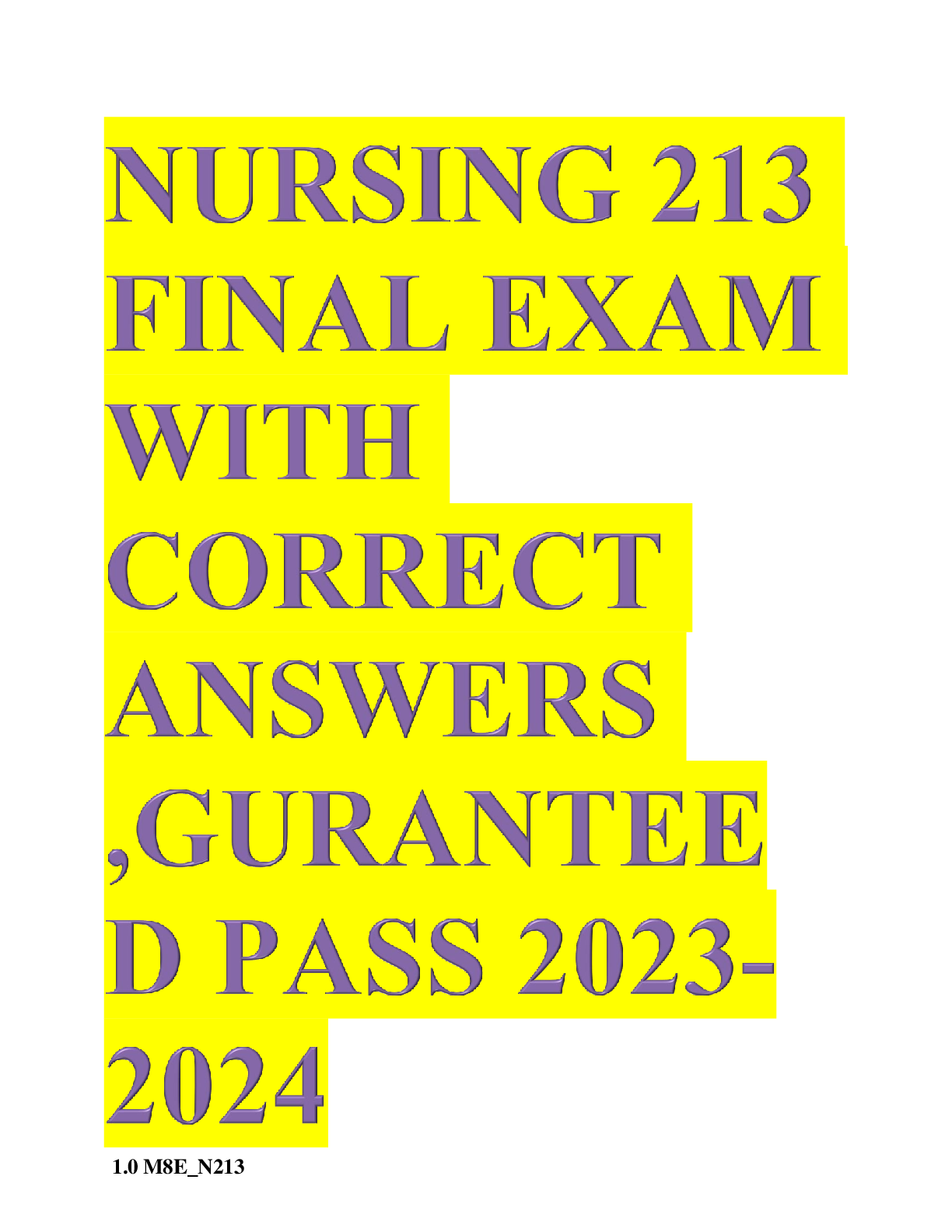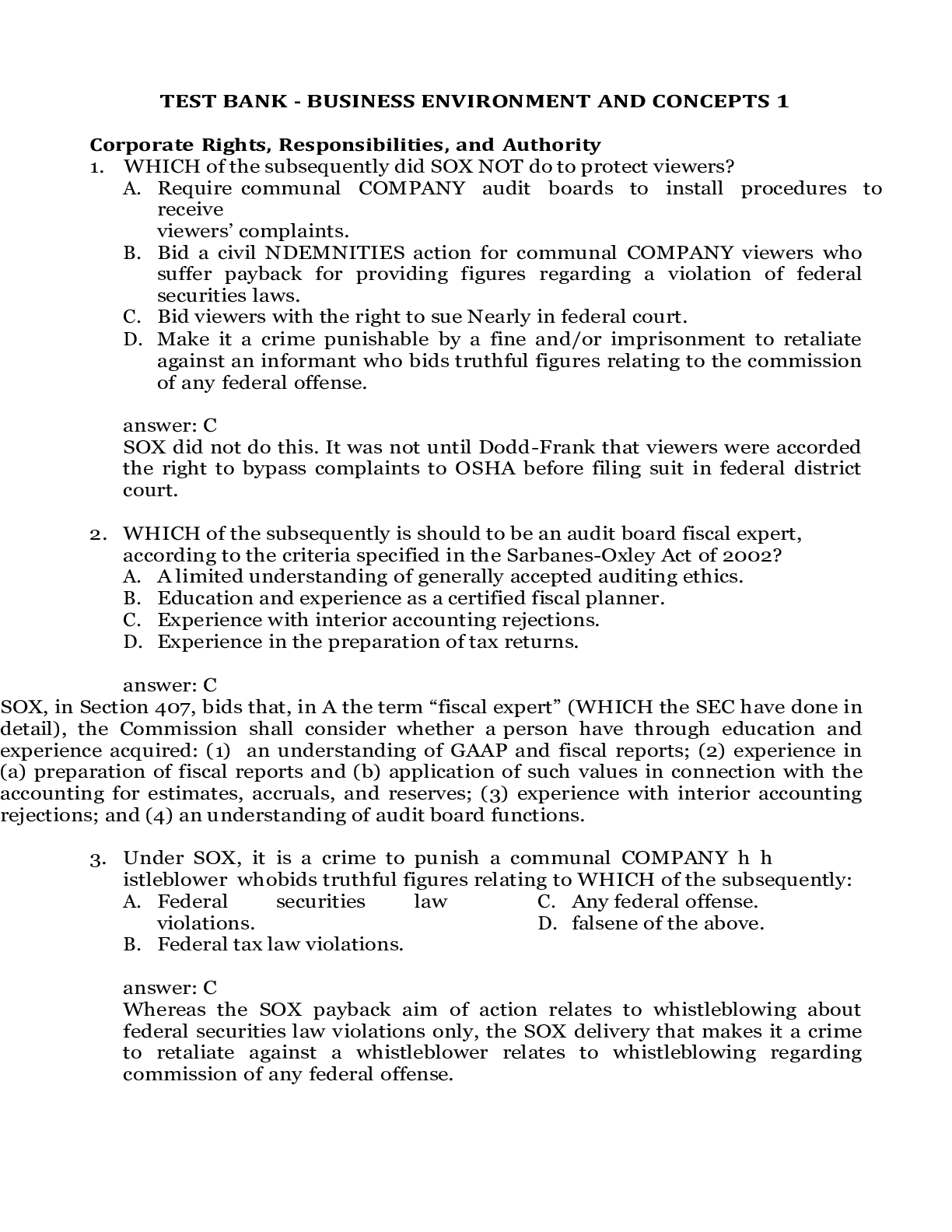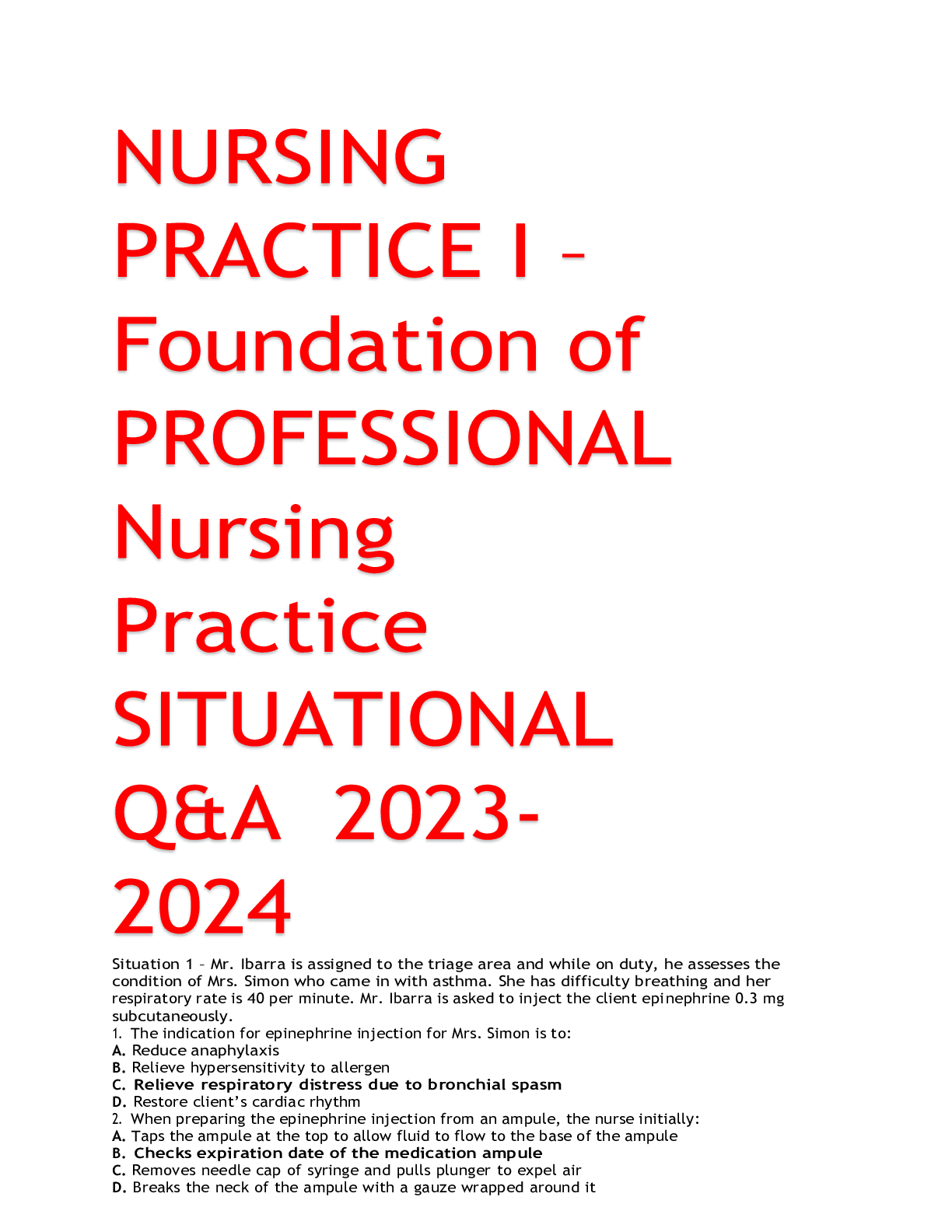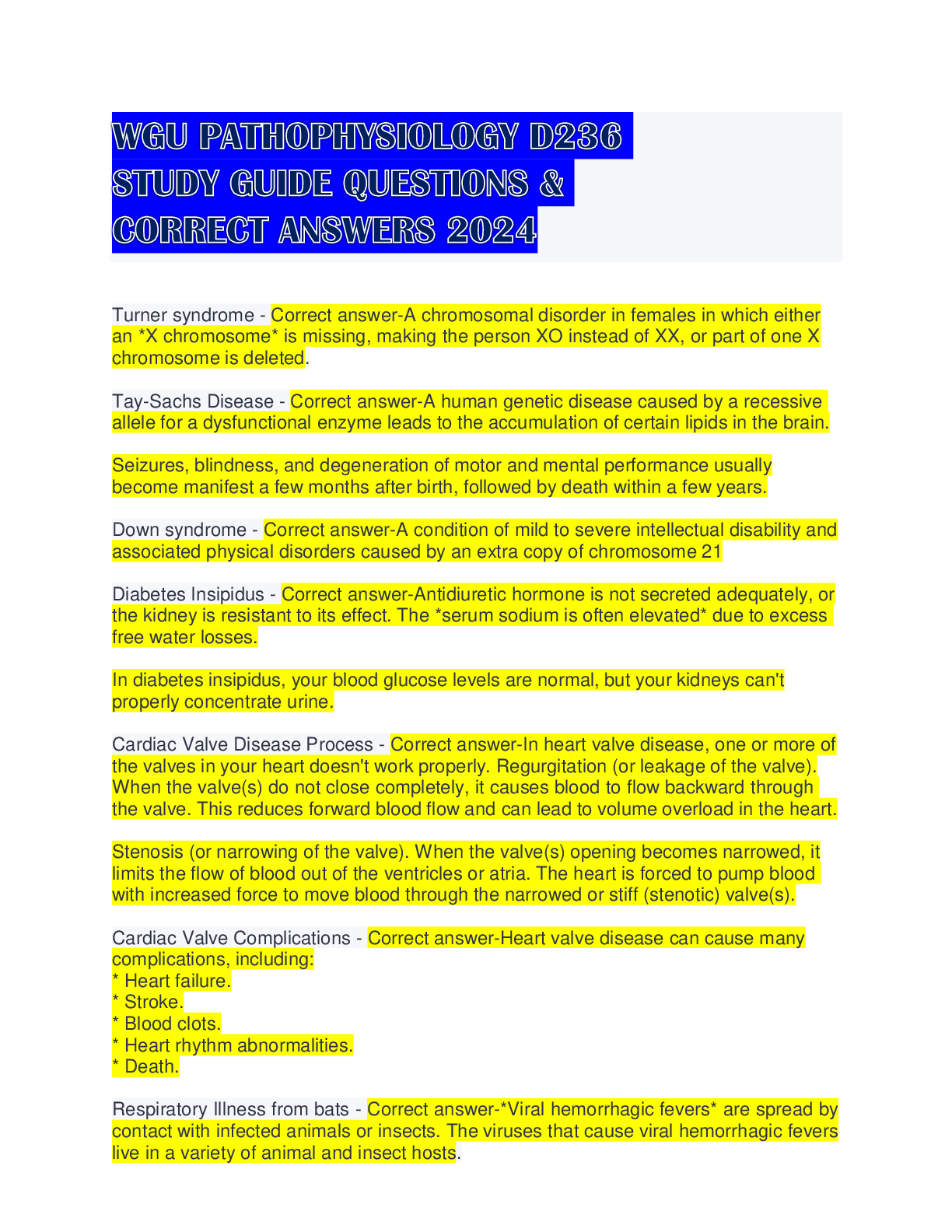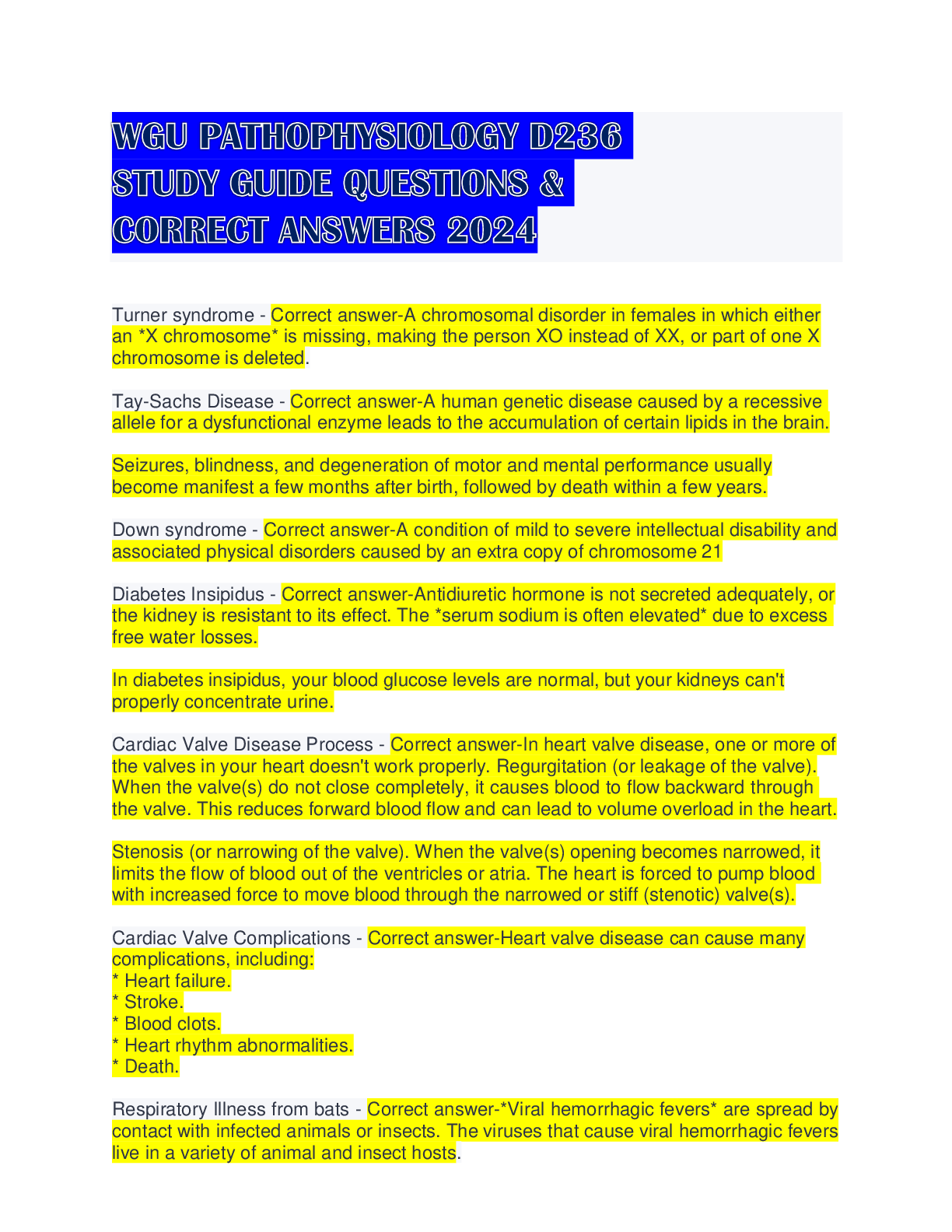EMT FISDAP > EXAM > EMTS FINALS REVIEW #1QUESTIONS WITH CORRECT ANSWERS 2024 (All)
EMTS FINALS REVIEW #1QUESTIONS WITH CORRECT ANSWERS 2024
Document Content and Description Below
EMTS FINALS REVIEW #1QUESTIONS WITH CORRECT ANSWERS 2024 1. Which of the following courses requires about 150 hours of training? A. EMR B. AEMT C. EMT D. Paramedic 2. National guidelines for EMS... care are intended to . A. reduce expenses at the local and state levels B. provide more consistent delivery of EMS care across the United States C. facilitate a national EMS labor group D. unify EMS providers under a single medical director 3. What is an EMT's primary service area? A. The main area in which the EMS agency operates B. The only area the EMT is certified to provide patient care C. The location where the EMT provides essential care during a 9-1-1 call D. The area serviced by the EMT's medical director 4. The determination that prompt surgical care in the hospital is more important than performing time-consuming procedures in the field on a major trauma patient is based MOSTLY on: A. EMS research. B. the lead EMT's decision. C. regional trauma guidelines. D. local protocols. 5. The ability to understand others and have them understand you is known as . A. self-confidence B. communication C. scene leadership D. teamwork and diplomacy 6. You are caring for a driver who struck a light pole. She admits to drinking alcohol but orders you not to tell anyone. You should report the information to . a. law enforcement personnel b. the receiving nurse or doctor c. your medical director d. the state motor vehicle department 7. Which of the following statements regarding the Americans With Disabilities Act (ADA) of 1990 is correct? A. The ADA applies only to individuals with a diagnosed and well-documented physical disability. B. According to the ADA, EMT candidates with a documented disability are exempt from taking the NREMT exam. C. The minimum number of hours required to successfully complete an EMT course is less for candidates who are disabled. D. The ADA prohibits employers from failing to provide full and equal employment to those who are disabled. 8. Prehospital patient care decisions should be based on . A. the experiences of EMTs B. EMS research C. an EMS agency's fiscal resources D. the opinions of physicians 9. The ability to handle multiple tasks based on their priority is called . A. patient empathy B. integrity C. time management D. patient advocacy 10. American Heart Association protocols are based on . A. trends in the EMS community B. opinions from a core group of cardiologists C. evidence-based research D. theories ready for field trial #2 1. After assessing a patient's blood glucose level, you accidentally stick yourself with the contaminated lancet. You should: Select one: A. report the incident to your supervisor after the call. B. discontinue patient care and seek medical attention. C. get immunized against hepatitis as soon as possible. D. immerse your wound in an alcohol-based solution. 2. General adaptation syndrome is characterized by which of the following phases? Select one: A. Reaction and resistance, euphoria, and physical exhaustion B. Immediate reaction, psychological exhaustion, and recovery C. Alarm response, reaction and resistance, and recovery D. Delayed reaction, alarm response, and physical recovery 3. Quid pro quo, a type of sexual harassment, occurs when the harasser: Select one: A. touches another person without his or her consent. B. makes rude remarks about a person's body parts. C. stares at certain parts of another person's anatomy. D. requests sexual favors in exchange for something else. 4. The MOST serious consequence of drug or alcohol abuse among EMS personnel is: A. low morale and frequently missed shifts. B. substandard or inappropriate patient care. C. tension among coworkers and supervisors. D. punitive action and the loss of a job. 5. Vector-borne transmission of an infectious organism occurs via: Select one: A. direct contact. B. inanimate objects. C. smoke or dust. D. animals or insects. 6. When decontaminating the back of your ambulance after a call, you should: Select one: A. allow surfaces to air dry unless otherwise indicated in the product directions. B. use a bleach and water solution at a 1:2 dilution ratio to thoroughly wipe all surfaces. C. clean all surfaces and patient contact areas with a mixture of alcohol and water. D. spray the contaminated areas and then immediately wipe them dry with a towel. 7. Which of the following scenarios MOST accurately depicts a posttraumatic stress disorder (PTSD) reaction? Select one: [Show More]
Last updated: 1 year ago
Preview 1 out of 121 pages
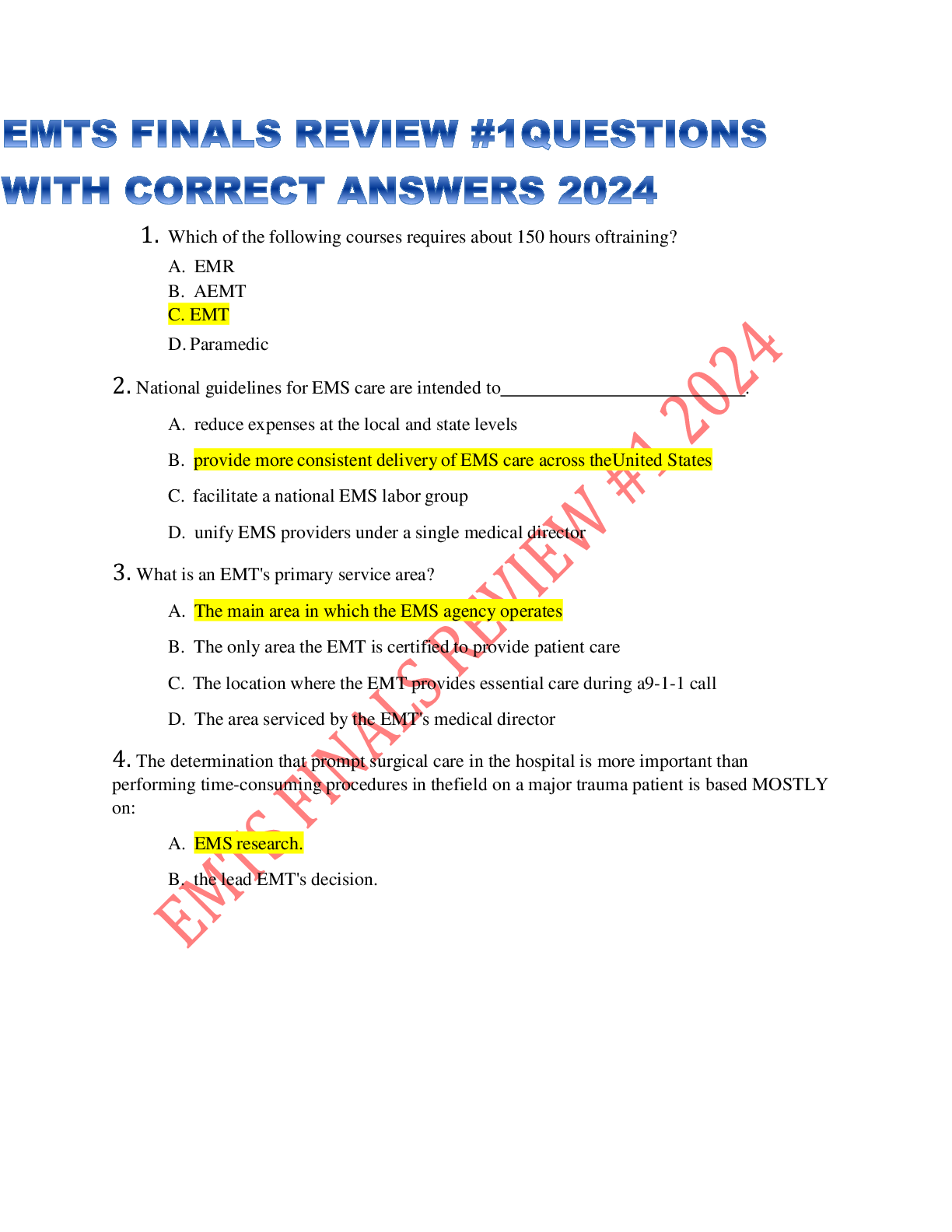
Buy this document to get the full access instantly
Instant Download Access after purchase
Buy NowInstant download
We Accept:

Reviews( 0 )
$16.00
Can't find what you want? Try our AI powered Search
Document information
Connected school, study & course
About the document
Uploaded On
Mar 09, 2024
Number of pages
121
Written in
Additional information
This document has been written for:
Uploaded
Mar 09, 2024
Downloads
0
Views
27

